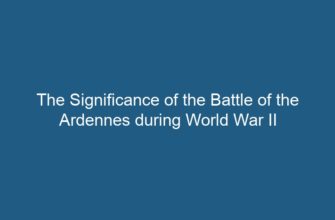Ancient Egypt, one of the world’s oldest civilizations, thrived for thousands of years due to a combination of unique physical features. From the mighty Nile River to the vast desert and fertile delta, these natural elements played a crucial role in shaping the society, economy, and culture of the ancient Egyptians. In this article, we will explore the various physical features that allowed Ancient Egypt to prosper and flourish.
The Nile River: Lifeline of Ancient Egypt
The Nile River, often referred to as the “lifeblood” of Ancient Egypt, played a pivotal role in the civilization’s development. Stretching over 4,000 miles from its source in East Africa to the Mediterranean Sea, the Nile provided the ancient Egyptians with a steady water supply for drinking, agriculture, and transportation.
The annual flooding of the Nile, known as the inundation, was both predictable and beneficial for the Egyptians. As the river overflowed its banks, it deposited nutrient-rich silt onto the surrounding floodplain, creating extremely fertile soil. This allowed the Egyptians to cultivate crops such as wheat, barley, and flax, ensuring a stable food supply.
Moreover, the Nile’s calm and navigable waters provided an efficient means of transportation, allowing goods and people to move easily throughout the country. This facilitated trade, communication, and the development of a centralized government.
The Desert: Protection and Isolation
The vast desert surrounding Ancient Egypt served as a natural barrier, offering protection and isolation from potential invaders. With the Libyan Desert to the west and the Arabian Desert to the east, the Egyptians were shielded from external threats, enabling them to develop a relatively secure and stable society.
The desert also provided valuable resources, such as precious stones and minerals. Ancient Egyptians mined turquoise, gold, and copper from the desert, which were used for trade and crafting exquisite artifacts.
Geography of ancient Egypt
The Nile Delta: Fertile Land and Trade Hub
The Nile Delta, located at the Mediterranean coast, was another vital physical feature that contributed to the prosperity of Ancient Egypt. The delta’s fertile soil, formed by the deposition of sediment carried by the Nile, supported abundant agriculture.
In addition to agricultural benefits, the Nile Delta became a bustling trade hub due to its strategic location. Its proximity to the Mediterranean Sea allowed the Egyptians to engage in maritime trade with neighboring civilizations, such as the Phoenicians and Greeks. This exchange of goods and ideas enriched ancient Egyptian culture and economy.
Pharaonic Monuments: Testaments to Power
Ancient Egypt is renowned for its magnificent pharaonic monuments, which stand as testaments to the power and grandeur of the civilization. The physical presence of colossal structures like the Great Pyramids of Giza and the temples of Luxor and Karnak served multiple purposes.
Firstly, these monuments were intended to honor the gods and ensure the divine protection of the pharaohs and their subjects. They were considered sacred spaces where religious rituals and ceremonies were conducted.
Secondly, these awe-inspiring structures were symbols of the pharaohs’ authority and control over the land. The construction of monumental buildings required a vast workforce, which in turn provided employment and stimulated the economy.
Climate: Stable and Predictable
The climate of Ancient Egypt played a crucial role in its prosperity. The region experienced a hot and dry climate with minimal rainfall, ensuring a stable and predictable environment for agricultural activities.
The absence of extreme weather events, such as hurricanes or tornadoes, allowed the ancient Egyptians to plan and manage their agricultural practices effectively. This stability, coupled with the annual flooding of the Nile, created ideal conditions for successful crop cultivation and ensured food security for the population.
Flora and Fauna: Abundance of Resources
Ancient Egypt was blessed with a rich variety of flora and fauna, which provided the civilization with an abundance of resources. The Nile and its surrounding areas supported a diverse range of plant and animal life.
The river served as a habitat for various species of fish, which were not only consumed by the Egyptians but also served as offerings to gods during religious ceremonies. Additionally, the fertile floodplain enabled the cultivation of numerous crops, including papyrus, an essential plant used for making paper, boats, and other everyday items.
The availability of natural resources, such as wood, stone, and clay, allowed the ancient Egyptians to construct their buildings, create pottery, and craft intricate sculptures and jewelry.
Frequently Asked Questions (FAQs)










